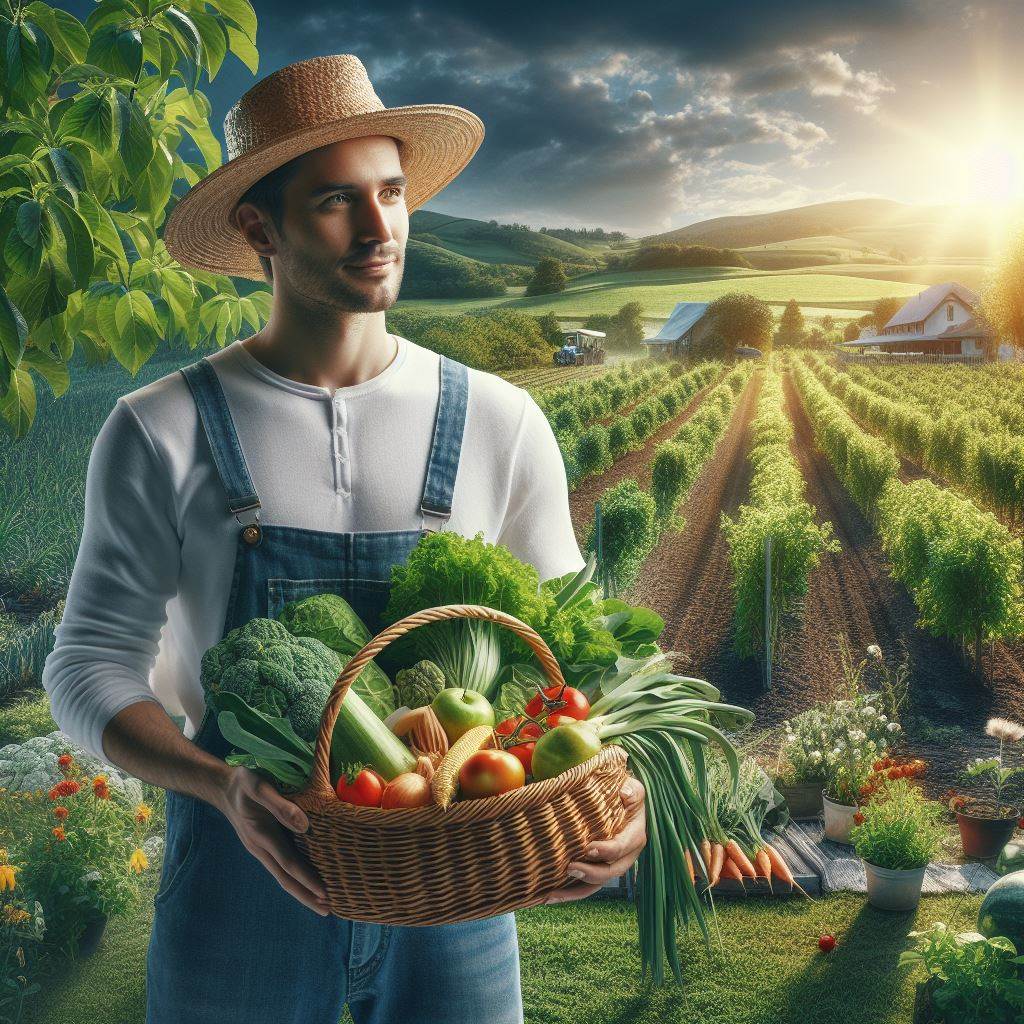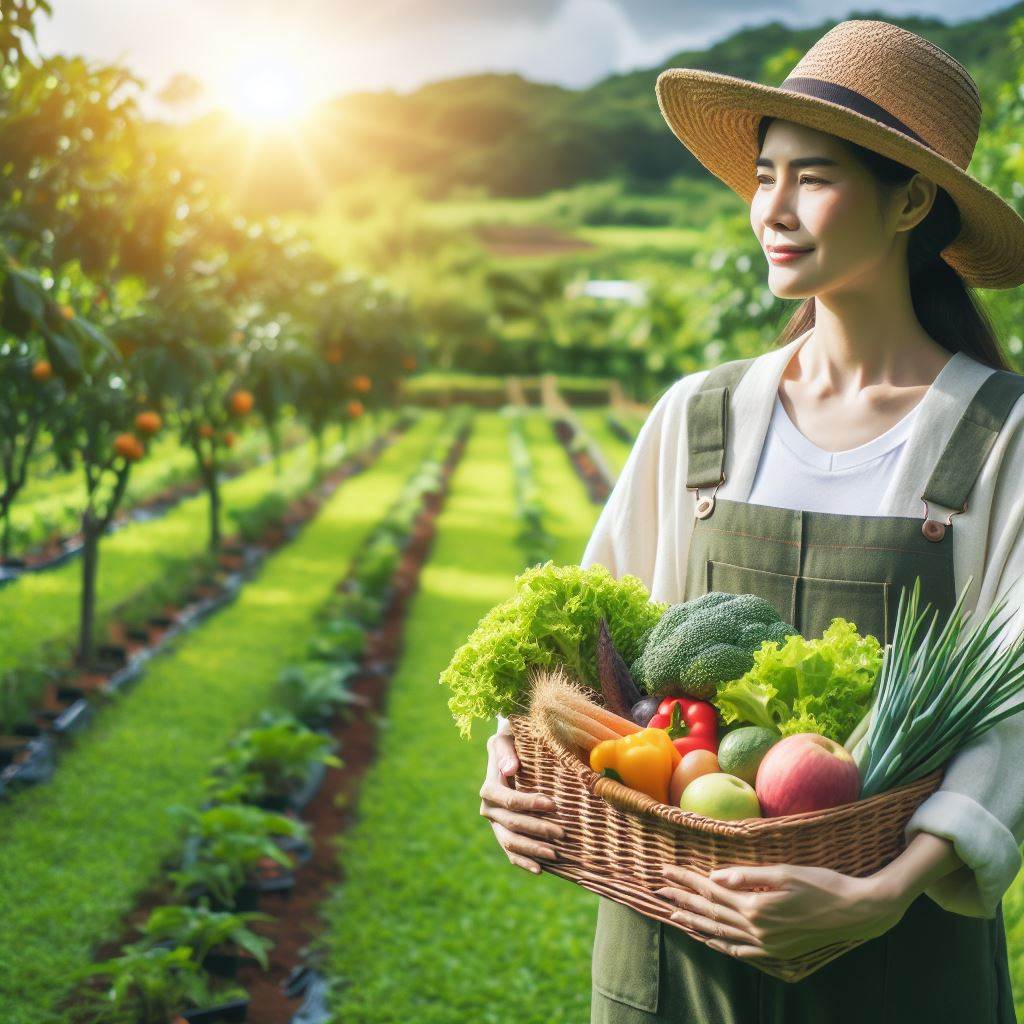Introduction
Eco-farming plays a crucial role in promoting sustainable agriculture and preserving the environment.
Livestock integration refers to the strategic inclusion of animals within the farming system.
The benefits and considerations of integrating livestock in eco-farming.
Within the realm of eco-farming, the integration of livestock not only amplifies agricultural productivity but also serves as a catalyst for holistic land management.
Livestock contribute to nutrient cycling, transforming organic matter into valuable fertilizers, and their grazing patterns can mimic natural ecological processes, fostering healthier landscapes.
This multifaceted approach extends beyond mere agricultural output, encompassing social, economic, and environmental dimensions.
The human-animal collaboration in eco-farming represents a return to age-old, sustainable practices, aligning with principles of permaculture and agroecology.
Through the intentional inclusion of livestock, we bridge the gap between traditional wisdom and contemporary agricultural innovations.
Livestock, when integrated thoughtfully, become allies in pest control, weed management, and overall farm resilience, mitigating the need for external inputs and reducing the ecological footprint.
Moreover, the integration of livestock in eco-farming offers a unique opportunity to revive local economies, fostering community engagement and empowering small-scale farmers.
By embracing a diversified approach that encompasses both plant and animal components, eco-farming not only addresses food security but also promotes self-sufficiency, resilience, and a more harmonious coexistence with the land.
In this intricate dance of nature and agriculture, the integration of livestock emerges as a cornerstone, guiding us towards a regenerative path where sustainability, biodiversity, and the well-being of both the land and its stewards are intricately interwoven.
As we explore the depths of this dynamic relationship, we uncover a wealth of possibilities for a flourishing, eco-centric agricultural future.
Read: Sustainable Pest Control in Agriculture
Benefits of integrating livestock in eco-farming
Increased nutrient cycling
When livestock are integrated into eco-farming systems, they contribute to the recycling of nutrients.
Transform Your Agribusiness
Unlock your farm's potential with expert advice tailored to your needs. Get actionable steps that drive real results.
Get StartedLivestock manure can be used as a natural fertilizer, which reduces the need for synthetic fertilizers.
Enhanced soil fertility
Livestock play a crucial role in improving soil fertility. Through their manure, they enrich the soil with essential nutrients, promoting healthy plant growth and increasing crop yields.
Diversification of farm products
Integrating livestock diversifies the range of products that can be obtained from the farm.
Not only can farmers harvest crops, but they can also produce animal products such as milk, eggs, and meat.
Reduced chemical inputs
Integrating livestock reduces the reliance on chemical inputs. Livestock manure provides natural fertilization, reducing the need for synthetic pesticides and reducing chemical pollution in the environment.
Improved pest and weed control
Livestock can contribute to pest and weed control on eco-farms.
For example, chickens can eat insects that harm crops, and grazing animals can help manage weeds by consuming them.
Integrating livestock into eco-farming practices offers numerous benefits for farmers and the environment alike.
By understanding and utilizing these advantages, farmers can create more sustainable and productive farming systems.
One of the key benefits of integrating livestock in eco-farming is the increased nutrient cycling. Livestock produce manure, which can be used as an organic fertilizer.
This helps recycle nutrients back into the soil, reducing the need for synthetic fertilizers and preventing nutrient runoff into water bodies.
Furthermore, livestock also contribute to enhanced soil fertility. Their manure is rich in essential nutrients, such as nitrogen, phosphorus, and potassium.
When applied to the soil, these nutrients are readily available for plant uptake, promoting healthy growth and increasing crop yields.
Integrating livestock into eco-farming systems also allows for the diversification of farm products.
Transform Your Agribusiness Online Presence
Stand out with compelling content tailored to engage your audience and drive results. From blog posts to social media, we’ll create what your business needs to grow.
Get StartedIn addition to growing crops, farmers can produce a variety of animal products, including milk, eggs, and meat.
This diversification provides additional income streams and reduces reliance on single crops.
Another advantage is the reduced need for chemical inputs. Livestock manure, when properly managed, can provide natural fertilization, reducing the reliance on synthetic fertilizers.
This not only saves costs but also reduces chemical pollution in the environment.
Livestock can also contribute to improved pest and weed control.
Chickens, for example, consume insects that may harm crops, acting as natural pest controllers.
Grazing animals, such as goats or sheep, can help manage weeds by consuming them, reducing the need for herbicides.
In short, integrating livestock into eco-farming practices brings numerous benefits.
From increased nutrient cycling to enhanced soil fertility, diversification of farm products to reduced chemical inputs, and improved pest and weed control, livestock play a pivotal role in sustainable and productive farming systems.
Read: Natural Building: Permaculture Approach
Considerations for integrating livestock in eco-farming
Integrating livestock into eco-farming requires careful consideration of various factors to achieve a sustainable and harmonious system.
This section explores key considerations for successfully integrating livestock in eco-farming practices.
Proper animal selection
A crucial aspect of integrating livestock is the selection of suitable animals.
It is essential to choose species and breeds that are compatible with the ecosystem in which they will be raised.
Unlock Farming Insights for Growth
Make smarter farming decisions with detailed reports on market trends, weather patterns, and soil health tailored to your farm's success. Boost productivity with actionable data.
Get ReportAdditionally, animals must be adaptable to the local climate and conditions, ensuring their ability to thrive in the given environment.
Prioritizing sustainable livestock breeds helps preserve genetic diversity and strengthens the resilience of the farm’s animal population.
Grazing management
Effective grazing management plays a crucial role in maintaining healthy pastures and optimizing forage production.
Implementing rotational grazing systems allows for controlled movement of livestock, preventing overgrazing and promoting the regeneration of vegetation.
Considering the impact of animal grazing on pasture quality is vital to prevent soil erosion and degradation.
Striking the right balance between grazing pressure and forage growth ensures the long-term sustainability of the grazing area.
Waste management
Waste management is another significant consideration in integrating livestock. Animal manure can be a valuable resource when handled effectively.
Proper storage, handling, and application techniques minimize nutrient loss and optimize its use as a natural fertilizer.
Implementing best practices for waste management reduces environmental impacts, such as water pollution and greenhouse gas emissions.
Composting and compost tea production offer additional sustainable solutions for managing and utilizing livestock waste.
Health and veterinary care
Maintaining the health and well-being of livestock is vital for both animal welfare and farm productivity.
Taking preventive measures, such as vaccination programs and regular health monitoring, helps prevent the outbreak of diseases.
Organic methods for addressing common livestock health issues, such as herbal remedies or natural supplements, reduce the reliance on pharmaceuticals and support eco-friendly practices.
Collaboration with local veterinarians or experts ensures access to specialized knowledge and guidance in managing livestock health effectively.
In fact, properly integrating livestock in eco-farming entails considering various factors such as animal selection, grazing management, waste management, and health care.
By prioritizing compatibility with the ecosystem, implementing sustainable practices, and minimizing environmental impacts, farmers can create a thriving and sustainable system where livestock and nature coexist harmoniously.
Read: Soil Regeneration: Basics and Benefits

Successful examples of livestock integration in eco-farming
Livestock integration in eco-farming has shown tremendous potential in various examples around the world.
Two successful cases that showcase the benefits and viability of this approach are organic dairy farms with rotational grazing and integrated aquaponics systems.
Case study 1: Organic dairy farm with rotational grazing
Positive outcomes and observations
One successful example of livestock integration is an organic dairy farm that implements rotational grazing. The farm has witnessed numerous positive outcomes.
They have seen an increase in milk production, improved soil fertility, and reduced weed growth.
Benefits for both livestock and pasture
Both livestock and pasture benefit from this integrated approach. Cows have access to fresh and diverse forage, which leads to healthier animals and higher milk quality.
Furthermore, rotational grazing helps naturally manage pests and weeds, reducing the need for chemical interventions.
Lessons learned and recommendations
From this case study, several valuable lessons and recommendations can be gathered.
Firstly, proper planning of the grazing system is crucial, considering factors such as herd size, pasture size, and rotation intervals.
Secondly, regular monitoring and adjustment of the system are essential to maximize its effectiveness.
Case study 2: Integrated aquaponics system
Explanation of the aquaponics system
Another successful example of livestock integration is the use of an integrated aquaponics system.
This system combines fish farming (aquaculture) with plant cultivation (hydroponics).
The fish waste provides nutrients for the plants, while the plants act as a natural filter for the water.
Synergistic relationship between fish and plants
The relationship between fish and plants in an aquaponics system is highly synergistic.
The plants absorb the nutrients from the fish waste, purifying the water and creating an ideal environment for the fish.
The fish, in turn, provide the necessary nutrients for the plants to grow.
Environmental advantages and economic viability
Integrated aquaponics systems offer several environmental advantages.
They use significantly less water compared to conventional farming systems, as water is recirculated within the system.
Additionally, there is no need for synthetic fertilizers or pesticides, making it an eco-friendly alternative. Furthermore, these systems can be economically viable, as they provide both fish and plant yields for commercial purposes.
In a nutshell, the successful examples of livestock integration in eco-farming demonstrate the numerous benefits and opportunities this approach offers.
Organic dairy farms with rotational grazing showcase improved productivity and sustainable land management.
Integrated aquaponics systems provide a synergistic relationship between fish and plants while offering environmental advantages and economic viability.
These examples inspire further research and adoption of livestock integration in eco-farming practices.
Read: Agroforestry: Merging Trees with Crops
Conclusion
Integrating livestock in eco-farming can bring numerous benefits. It improves soil fertility, nutrient cycling, and pest control.
Farmers should be encouraged to explore livestock integration as part of sustainable practices.
It can enhance farm productivity and diversify income sources.
The integration of livestock in eco-farming offers a promising approach for sustainable agriculture.
It is a call to action for farmers to consider this method and contribute to a more resilient and environmentally friendly food system.




